Software development professionals in Ukraine: Overview 2020
The reason why so many businesses worldwide benefit from IT outsourcing to Ukraine is a talent pool of tech professionals. Let’s take a look at the Ukrainian IT talent pool.
COVID-19 has changed human behaviour in all spheres of life, including our work and shopping habits, private and social lives, and health and wellbeing. Unable to follow their usual lifestyle, people worldwide were forced to form new habits that often relied on digital technology. Companies’ leaders had to adopt digital transformation strategies to adapt to the new reality.
The pandemic was a game-changer for the high tech industry, as evidenced by significant changes in certain industries’ market valuations worldwide. According to a McKinsey report based on data from the top 5000 companies globally, the high tech industry, which includes the software, hardware, and IT solutions and services subsectors, experienced an unprecedented 53% increase in shareholder return in 2020 compared to 2019. Thus, it is worth discussing how Coronavirus impacted the IT sector, accelerated digital transformation and what led to this improved performance in 2020.
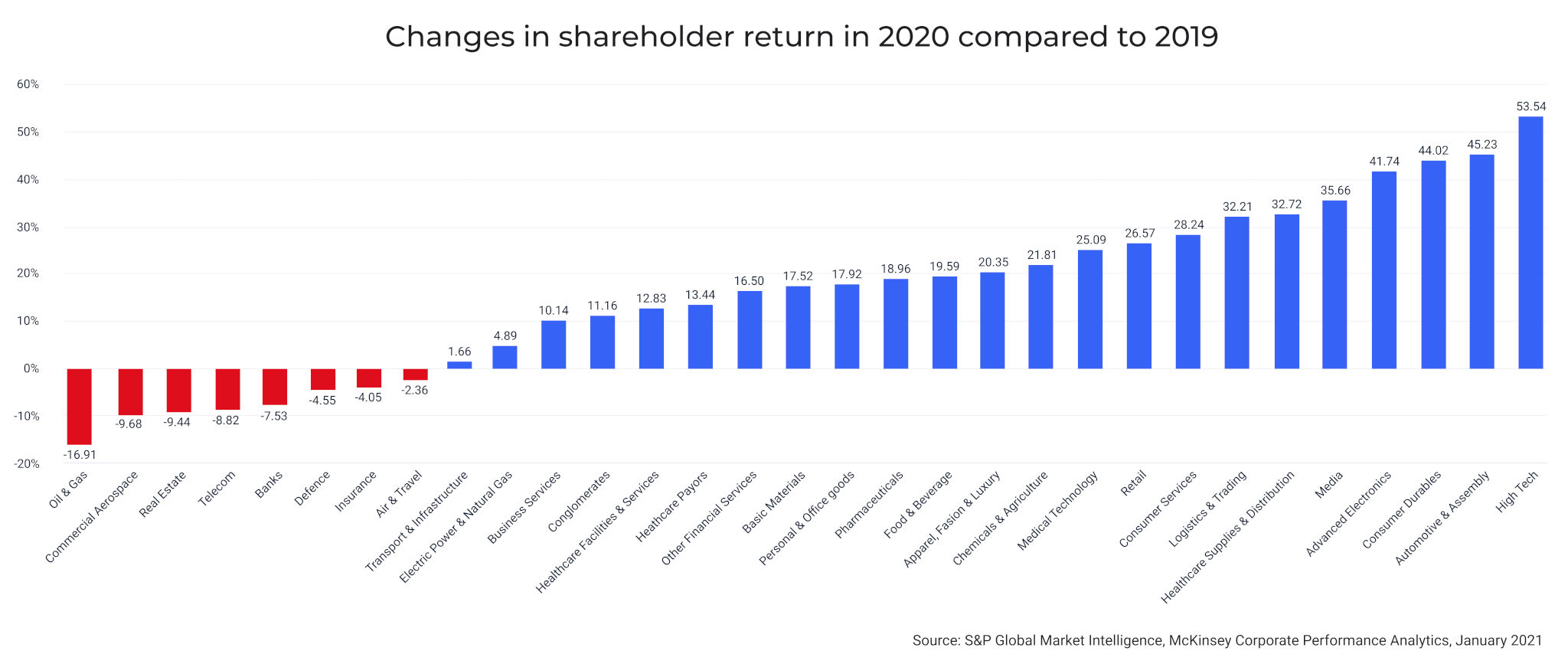
To adapt to the ‘next normal’, businesses across industries have to reassess their operational processes and accelerate the adoption of digitisation and automation. Coined by McKinsey, the term ‘next normal’ refers to a new post-viral era that will dramatically differ from what has been before COVID-19.
Before the pandemic, remote work was somewhat rare, and fully remote workplaces were the exception, as employers worried about its impact on productivity and corporate culture. However, COVID-19 compelled hundreds of millions of employees worldwide to work from home.
In June 2020, a survey by talent-acquisition tech provider Workable revealed that the percentage of companies worldwide with fully remote workers increased from 6.0% before the pandemic to 30.9% afterwards. Clearly, businesses have moved online as much as possible.
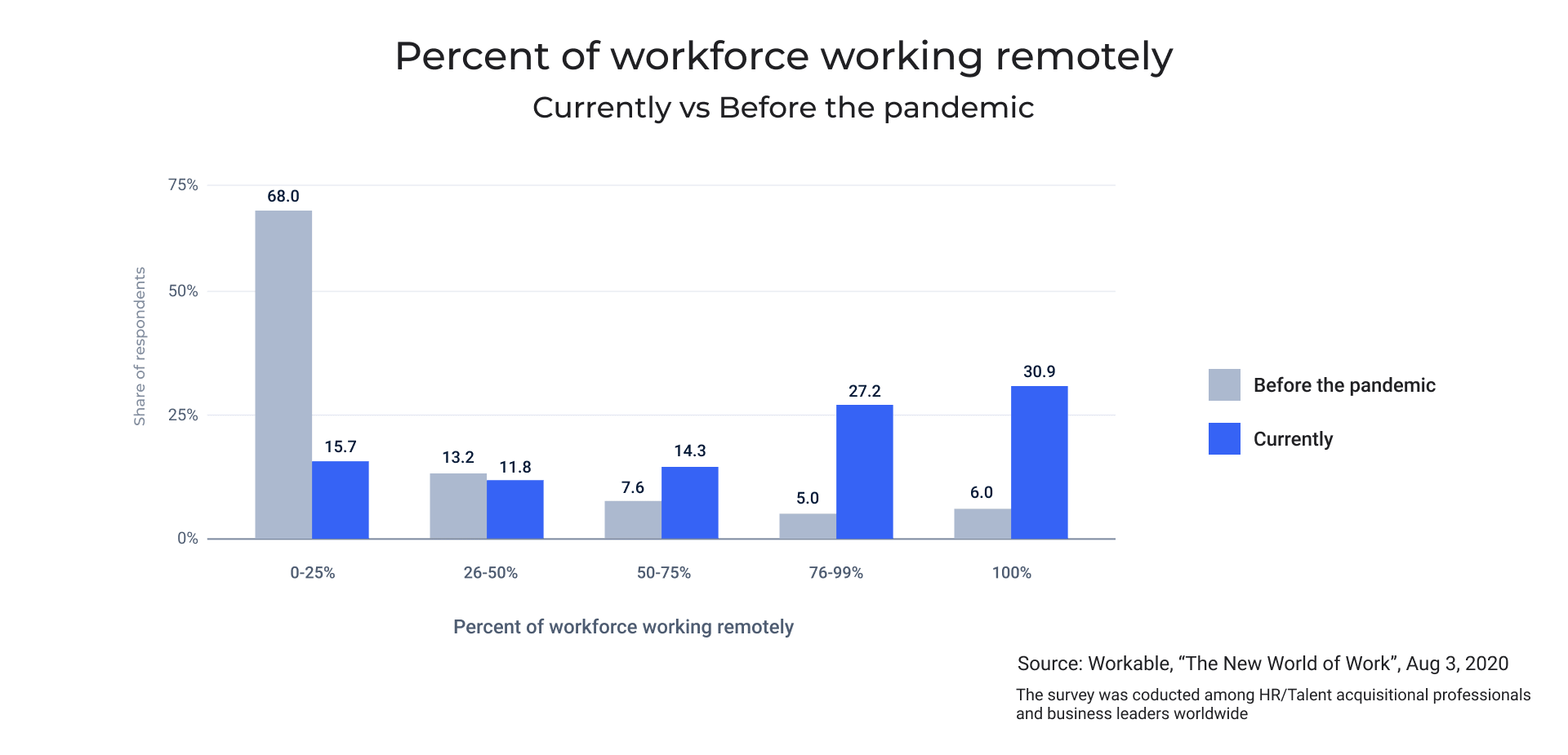
However, managing the Covid remote working process was quite challenging for most companies, as company leadership was unprepared for this abrupt and mandatory shift to remote work. Realising that existing corporate business processes were unsuitable for remote work, organisations scrambled to create new ones. Remote work required organisations adopt new software tools and methods to measure workforce productivity and increase it to pre-COVID levels.
According to a report published by TrustRadius, 67% of business owners reported increased spending on web conferencing software while 57% spent more on collaboration tools and 52% on remote desktop utilities.
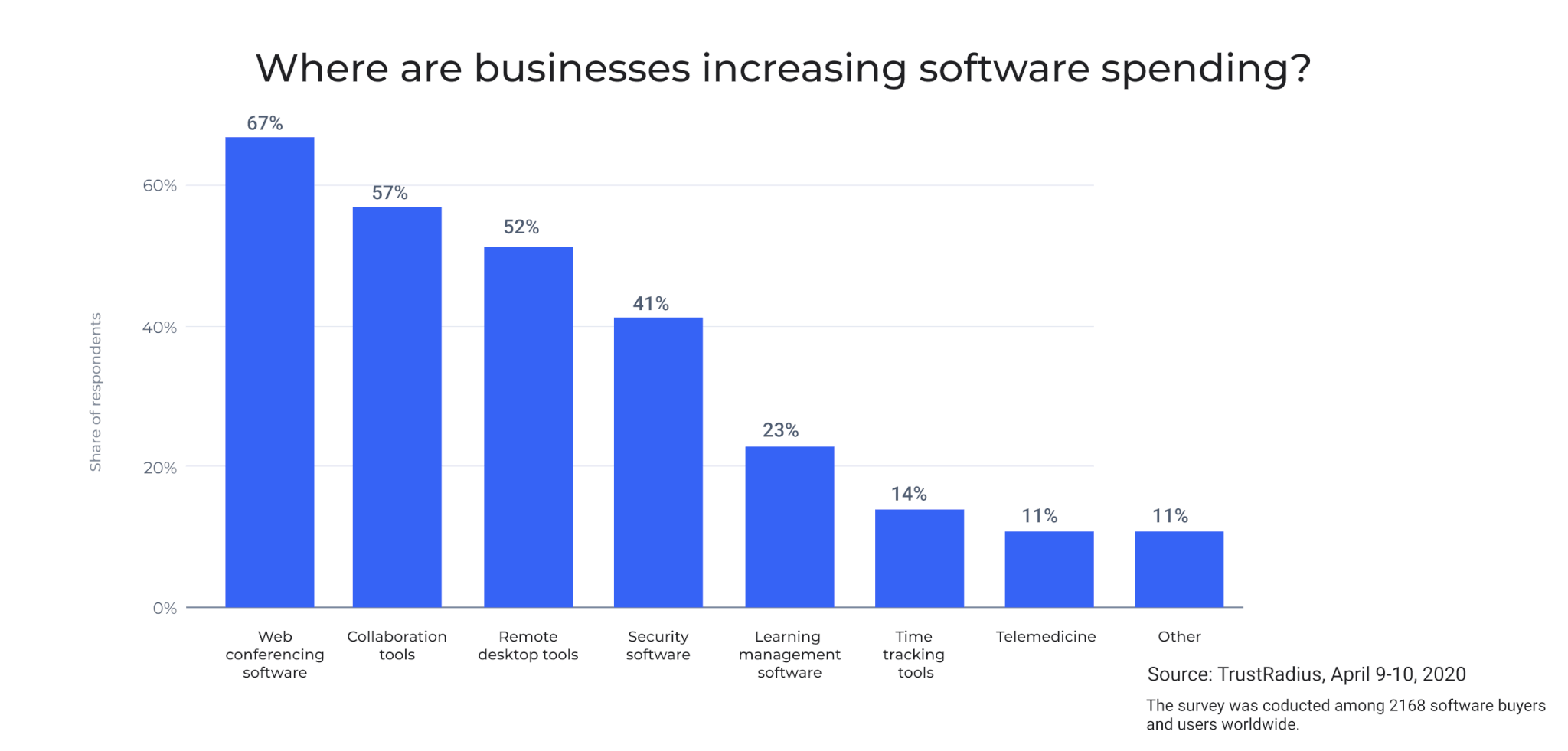
The transition to remote work was time-consuming and costly, but most companies adapted to the new reality. The first lesson the world learnt from the pandemic was that employees could complete much of their work virtually from home. Remote meetings with clients and partners, daily standup meetings and even team building activities through Zoom no longer seem awkward.
Many companies have acknowledged that remote and on-site work can be equally effective. Incorporated wisely, remote work will reduce operational costs and improve talent acquisition by allowing employers to recruit beyond their physical office locations. The workforce in the next normal is no longer limited by city, country or continent. On the contrary, flexible talent acquisition strategies and increased globalisation will be beneficial for business growth.
Of course, the workforce will not remain entirely remote post-COVID. However, some employers intend to increase the number of remote workers at the lower levels and adopt a hybrid work model. According to a McKinsey survey, 34% of executives representing companies in the information and technology industry said that at least one-tenth of their employees could work remotely two or more days a week at least two years from now.
Yet companies will face challenges while managing a hybrid workforce. To achieve high productivity, company leaders will need to revise their operational processes and management tools, allocate roles that are best suited to remote work and reconfigure workspaces.
COVID-19 has forced companies to change how they operate. To weather the crisis, 48% of organisations had to increase the digitisation of customer channels (for example, via eCommerce, mobile apps or chatbots) while 35% improved their supply chains using digital platforms. Adopting AI and automation became vital to adapting successfully to the new reality of remote working and learning, online shopping and consumption, and online entertainment.
Here is what 794 respondents, business executives, say about digital transformation in their companies since the COVID-19 has erupted, according to a McKinsey global survey.
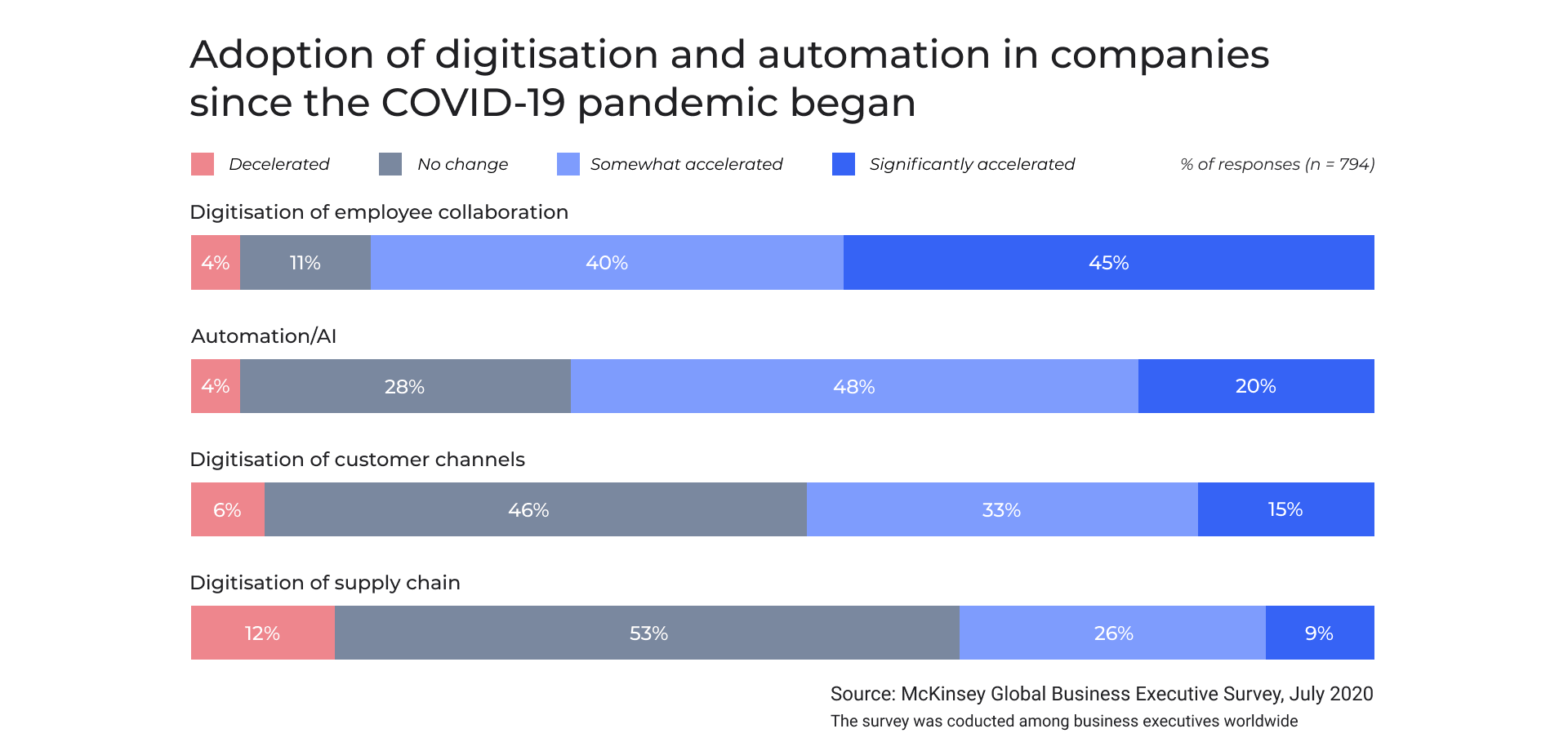
The most significant digital transformations were seen in businesses in information and technology and finance and insurance. However, these sectors were leaders in digitisation and automation long before the pandemic.
McKinsey experts believe that ‘technology will be the competitive differentiator for how all businesses and ecosystems work’. Technology is now centre stage, as COVID-19 has demonstrated that employing advanced technologies gives a business a major advantage in competing for clients.
Shifting to a hybrid work model requires companies to reconsider their real estate decisions and accelerate the creation of ‘Digital Workspaces.’ Such workspaces employ a set of technologies to provide employees with the flexibility of working securely from any location on any device, thereby enhancing efficiency. Creating a digital post-COVID-19 workplace may involve adopting cloud-based technologies such as collaboration tools, document and knowledge management systems, ERP, CRM, and the like.
Digital workspaces are a next-level employee experience designed to enhance workforce mobility and productivity while decreasing rental costs by practising space-sharing. For example, many IT companies forgo designated workspaces for employees, allowing them to reserve workspace for a particular timeslot when they need to work from the office.
Furthermore, workspace safety requirements have become stricter. To comply with recommendations for the post-COVID workplace from the World Health Organization and the Centers for Disease Control and Prevention, company leaders have had to improve hygiene protocols and identify and isolate potentially infectious people through measures such as pre-entry temperature screenings, regular workspace disinfection, health checks through mobile applications and even hiring more health and safety staff.
COVID-19 forced companies to consider their priorities and focus on activities that will increase profitability in the next normal. Business executives expect to rely more on contractors, individual freelancers and outsourcing companies. However, companies must weigh their options when choosing to work with individual contractors or an outsourcing company. For instance, managing individual contractors requires more effort than managing on-site workers, which is why outsourcing companies can be helpful. Following established business processes, these companies ensure the project is finished on time and can foresee possible failures. Unlike individual contractors, outsourcing companies bear the risks.
Working with an experienced outsourcing provider helps companies overcome productivity challenges, streamline digital transformation and access resources and specific IT expertise that may be lacking in-house.
According to the Harvey Nash/KPMG CIO Survey 2019, 45% of CIOs and technology executives worldwide say they outsource primarily to ‘provide access to skills not available in-house’. This is the primary trend determining the future of IT outsourcing. Each year, skills shortages in organisations worsen, bottlenecking growth and digital transformation. Today, the labour market lacks skilled professionals in data analytics, cybersecurity, AI and digital transformation, and COVID-19 has exacerbated this situation. Companies must choose between following conservative hiring practices – an untenable position – or being flexible by using contractors and outsourcing partners to achieve their business goals. According to LiveArea research, US and UK businesses believe outsourcing IT and development activities will offer a chance to achieve greater flexibility post-COVID-19.
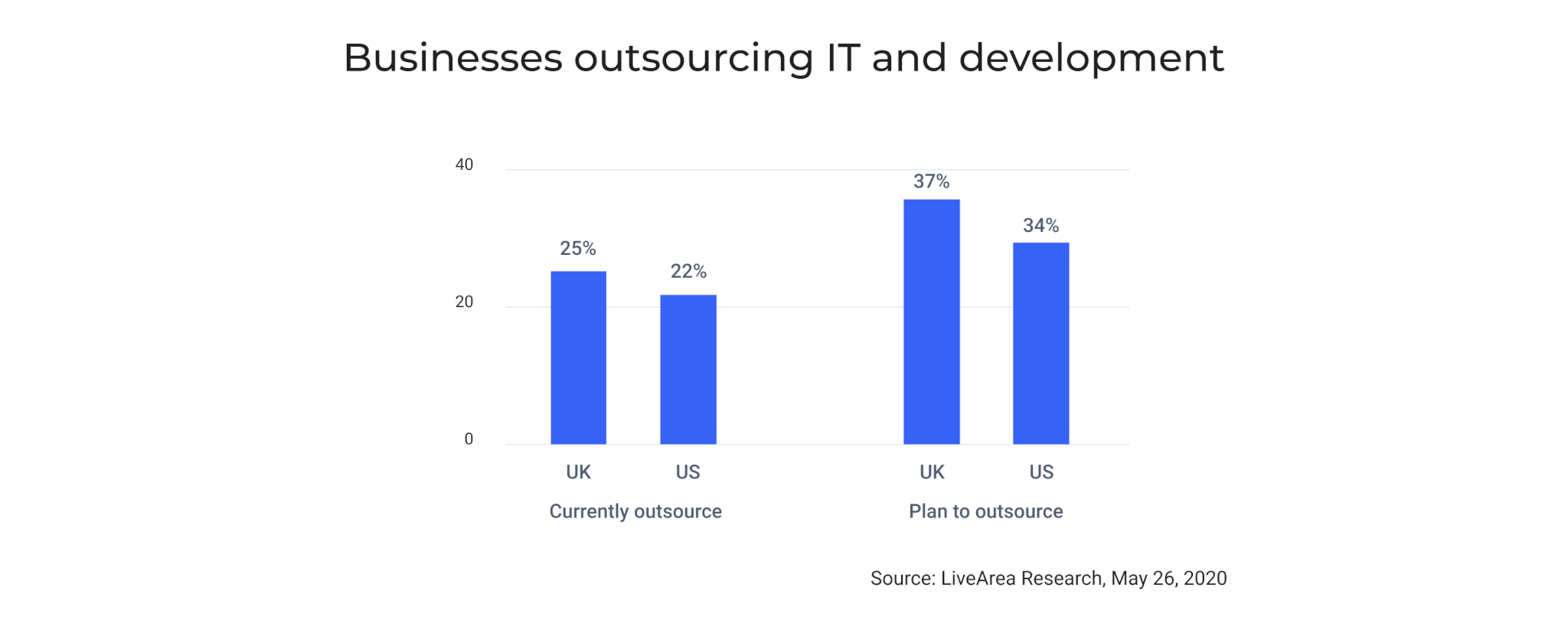
Along with many IT companies, SSA Group faced unexpected challenges during the downturn. The company was able to overcome them by focusing on the following points:
According to predictions for 2021 from the International Data Corporation (IDC), success and revenue growth in the information technology (IT) industry depends on ‘the responsiveness, scalability, and resiliency of its infrastructure, applications, and data resources’. The following trends highlighted by the IDC are not new but have accelerated significantly in 2020:
In only eight weeks, the business world made a digital transformation equivalent to ten years of progress. How we work has changed drastically, ushering in new perspectives on talent acquisition and creating hybrid workplaces that allow companies to decrease rental costs and enhance flexibility while maintaining an acceptable level of workforce productivity.
Businesses’ future success and profitability depend on the ability to react to rapidly changing conditions, make essential decisions at the speed of light and be flexible in attracting IT talent. Consider the experienced IT consultants from SSA Group to support your automation and digital transformation plans and achieve revenue growth.

The reason why so many businesses worldwide benefit from IT outsourcing to Ukraine is a talent pool of tech professionals. Let’s take a look at the Ukrainian IT talent pool.

Many tech giants have integrated the DevOps approach into their software development teams. Let’s discuss the role of the DevOps Engineer.
you're currently offline